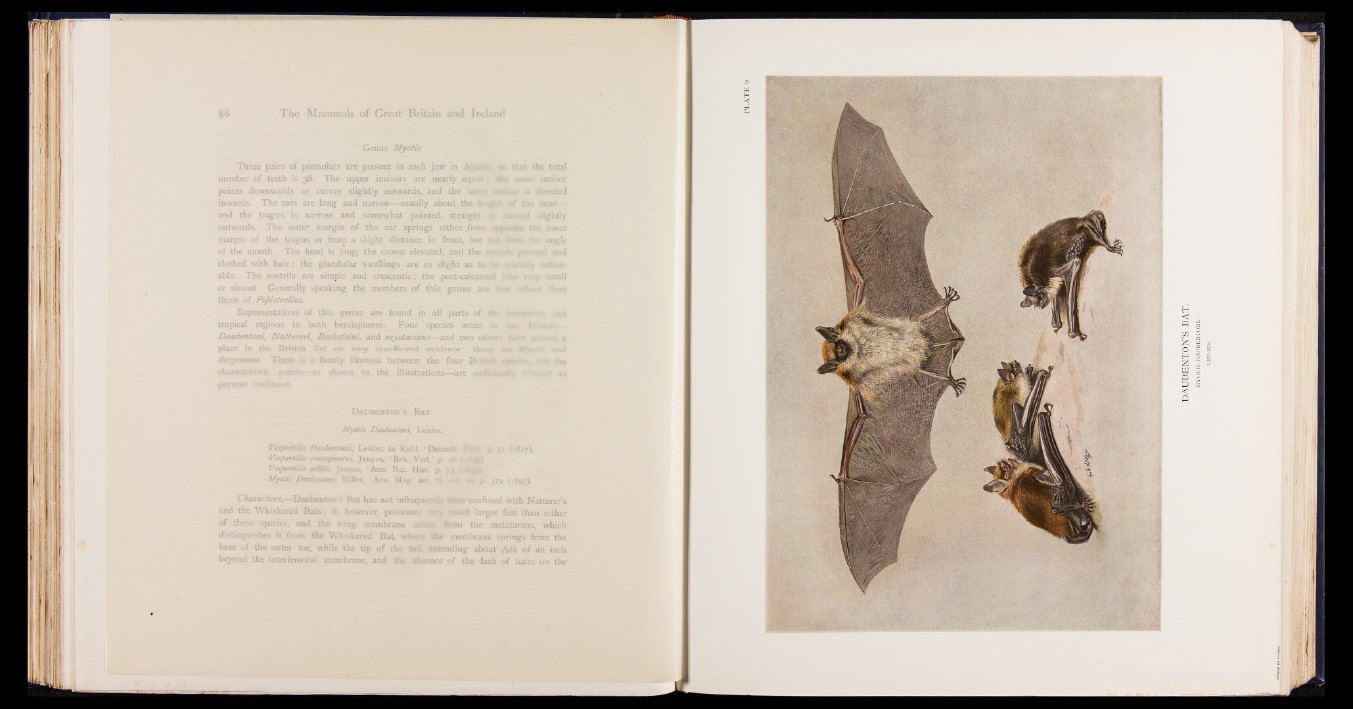
Genus Myotis
Three pairs of premolars are present in each jaw in Myvtes, 90 that the total
number of teeth is 38. The upper incisors are nearly equal. the outer incisor
points downwards or curves slightly outwards, and the inner ncisor is directed
inwards. The ears are long and narrow— usually about the U of the head -
and the tragus is narrow and somewhat pointed, straight o* curved slightly
outwards. The outer margin of the ear springs either from opposite the inner
margin of the tragus or from a slight distance in front, but not ‘com the angle
of the mouth. The head is long, the crown elevated, and the mn /.):• pointed and
clothed with hair; the glandular swellings are so slight as to be scarcely noticeable.
The nostrils are simple and crescentic; the post-calcaneal lobe very small
or absent. Generally speaking, the members of this genus are tesa robust than
those of Pipistrellus.
Representatives of this genus are found in all parts of the temper.-vnd
tropical regions in both hemispheres. Four species occur in out I'sUmj
Daubentoni, Nattereri, Becksteini, and mystacinus—and two other« liave a
place in the British list on very insufficient evidence: these arcs Mye/ns and
dasycHeme. There is a family likeness between the four British speck*-, but the
characteristic points— as shown in the illustrations— are sufficiently di.*bssut to
prevent confusion
D a u b e n t o n ’s B a t
Myotis Daubentoni, Leisler.
VespetHUo Danbentonii, Leisler, in Kühl, ‘ Deutsch. F-fed.' p. $1 (1817).
Vespertilio mmrginatus, Jenyns, ‘ Brit. Veit.' p. *6 >;
Vespertilio a dü u , jen yn s , ‘ A nn. Na t. H ist .' p. 73
Myotis Danbeniont, Miller, ‘ A n n . M a g .’ ser. vi. p. 379 (1897).
ently been confused with Natterer’s
very much larger feet than either
»©* from the metatarsus, which
the membrane springs from the
extending about iVth of an inch
ence of the lash of hairs on the
Characters.— Daubenton’s Bat has not infrequi
and the Whiskered Bats; it, however, possesses
of these species, and the wing membrane aru
distinguishes it from the Whiskered Bat, where
base of the outer toe, while the tip of the taii,
beyond the interfemoral membrane, and the abs